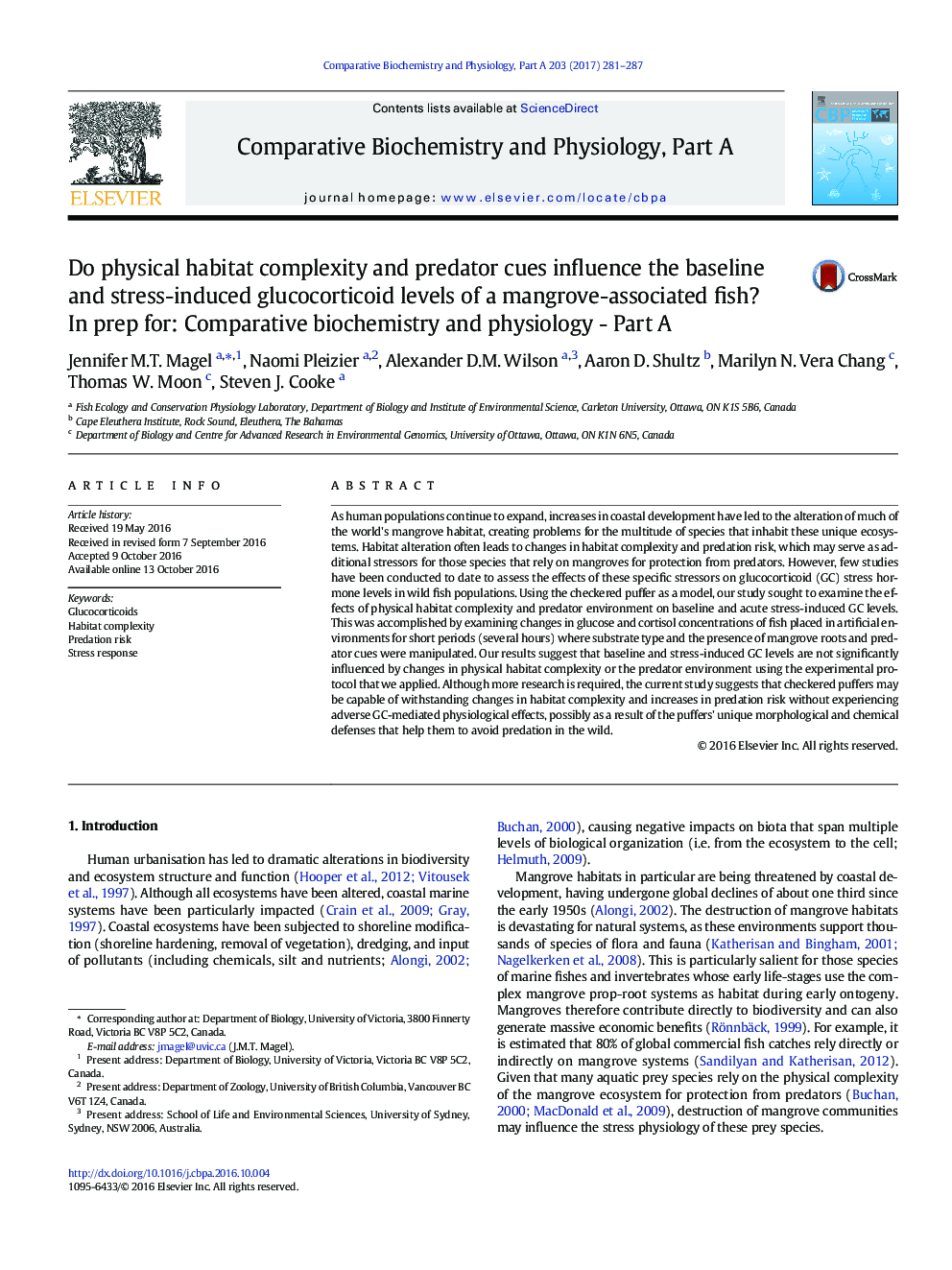| کد مقاله | کد نشریه | سال انتشار | مقاله انگلیسی | نسخه تمام متن |
|---|---|---|---|---|
| 8318436 | 1538984 | 2017 | 7 صفحه PDF | دانلود رایگان |
عنوان انگلیسی مقاله ISI
Do physical habitat complexity and predator cues influence the baseline and stress-induced glucocorticoid levels of a mangrove-associated fish?
ترجمه فارسی عنوان
آیا پیچیدگی زیستگاه فیزیکی و نشانه های شکارچی بر روی سطوح گلوکوکورتیکوئیدی ناشی از استرس و ناشی از ماهی های وابسته به مانگرو تاثیر می گذارند؟
دانلود مقاله + سفارش ترجمه
دانلود مقاله ISI انگلیسی
رایگان برای ایرانیان
کلمات کلیدی
گلوکوکورتیکوئیدها، پیچیدگی محل زندگی، ریسک جبرانی، پاسخ استرس،
موضوعات مرتبط
علوم زیستی و بیوفناوری
بیوشیمی، ژنتیک و زیست شناسی مولکولی
زیست شیمی
چکیده انگلیسی
As human populations continue to expand, increases in coastal development have led to the alteration of much of the world's mangrove habitat, creating problems for the multitude of species that inhabit these unique ecosystems. Habitat alteration often leads to changes in habitat complexity and predation risk, which may serve as additional stressors for those species that rely on mangroves for protection from predators. However, few studies have been conducted to date to assess the effects of these specific stressors on glucocorticoid (GC) stress hormone levels in wild fish populations. Using the checkered puffer as a model, our study sought to examine the effects of physical habitat complexity and predator environment on baseline and acute stress-induced GC levels. This was accomplished by examining changes in glucose and cortisol concentrations of fish placed in artificial environments for short periods (several hours) where substrate type and the presence of mangrove roots and predator cues were manipulated. Our results suggest that baseline and stress-induced GC levels are not significantly influenced by changes in physical habitat complexity or the predator environment using the experimental protocol that we applied. Although more research is required, the current study suggests that checkered puffers may be capable of withstanding changes in habitat complexity and increases in predation risk without experiencing adverse GC-mediated physiological effects, possibly as a result of the puffers' unique morphological and chemical defenses that help them to avoid predation in the wild.
ناشر
Database: Elsevier - ScienceDirect (ساینس دایرکت)
Journal: Comparative Biochemistry and Physiology Part A: Molecular & Integrative Physiology - Volume 203, January 2017, Pages 281-287
Journal: Comparative Biochemistry and Physiology Part A: Molecular & Integrative Physiology - Volume 203, January 2017, Pages 281-287
نویسندگان
Jennifer M.T. Magel, Naomi Pleizier, Alexander D.M. Wilson, Aaron D. Shultz, Marilyn N. Vera Chang, Thomas W. Moon, Steven J. Cooke,
